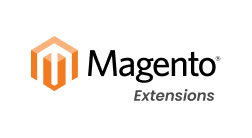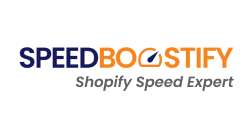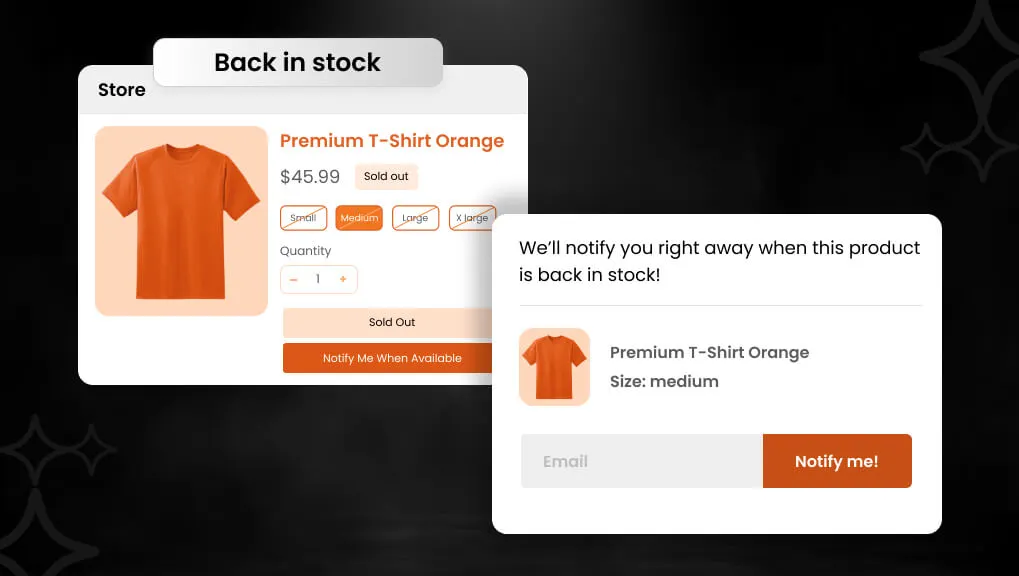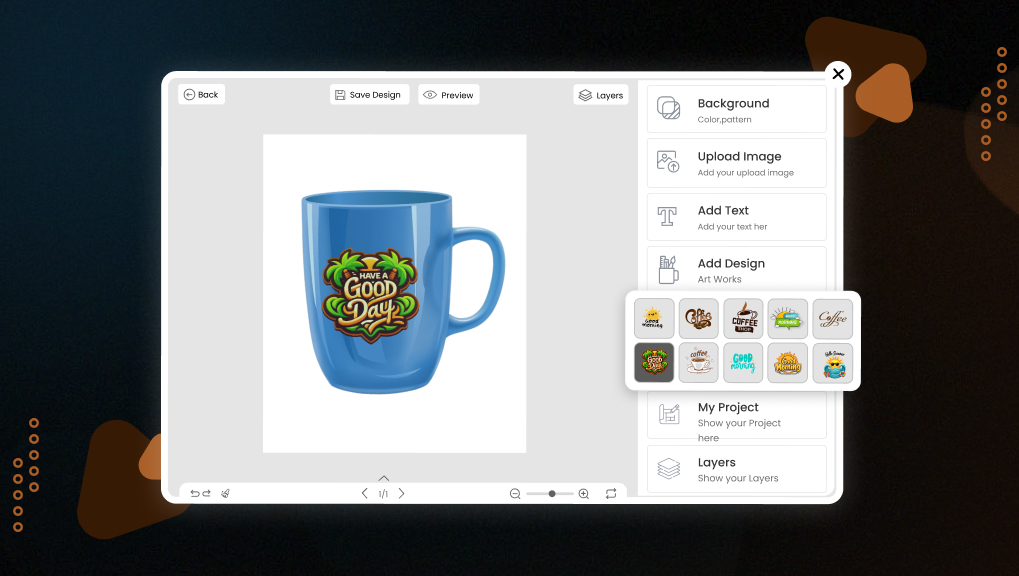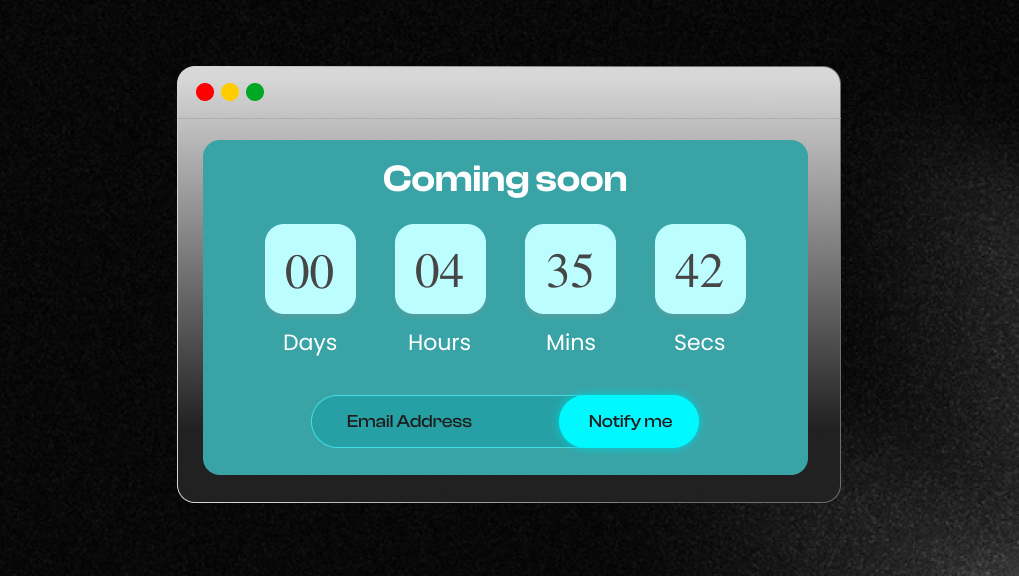Quick Summary: Personalization for your product in e-Commerce means Shopify allows you to create distinct shopping experiences for different customers. In this blog, we’ll describe what it is, why it is important, and how to put it in place using apps and tools. This blog explains the basics, like personalized recommendations and emails, plus extras like AI personalization. There are numerous advantages, including more sales and happier customers who return. We will discuss what type of metrics you should be measuring as an indicator of personalization success, such as conversion rates.
In today’s digital marketplace, e-commerce personalization has become a game-changer for online retailers. This cutting-edge approach tailors the shopping experience to individual customers. That makes it more relevant and engaging. As online competition in e-commerce is at a higher point and businesses are turning to personalization to stand out and boost their bottom line. Businesses that get personalization right can generate 40% more revenue from those activities than average players. Shopify is a leading e-commerce platform that offers powerful tools to implement personalized experiences. It allows stores to connect with their audience on a deeper level.
Key Takeaways
- Product personalization brings back the one-on-one experience while shopping online and allows companies to use customer data to offer personalized items and offers to customers.
- Personalized offers, together with an effective e-Commerce personalization strategy, can lead to revenue increases of up to 40% for businesses.
- By using Shopify apps like Product Personalizer Studio, customers can preview how their customizable products will look like which will enhance customer engagement for brands.
- Customized email marketing and personalization recommendations can reduce cart abandonment and increase average order value.
- Utilizing AI will enable on-the-fly adjustments to increase customer return, and one can always A/B test to see what worked best to adjust to improve.
Personalization is the future of Shopify stores which set to shape more meaningful and bespoke customer experiences. Read on to find out what ecommerce personalization is and why it matters for online retailers. Later in this post, we’ll explore specific methods for personalization on Shopify to get started and more sophisticated strategies you can pursue as well as how to measure their effectiveness. You will end up here knowing in-and-out of Shopify Product Personalization to boost your online store and sales, since the market is growing rapidly.
How Product Personalization Works in Shopify
Product personalization in Shopify begins with data, like what visitors browse or purchase from the store. This data helps the system suggest products on their behalf. How the process works is quite simple:
- Collect the Data: Shopify collects data about what’s done by users do. What they may do could be based on things like previous purchases, recent search activity, or where they are located. Google Analytics or plug-ins that Shopify may have will help take care of this.
- Analyze and Segment: Artificial Intelligence will help to segment customers based on their actions. For example, if a person is a new user, they may receive welcome offers, while previous users may receive loyalty-based offers.
- Implement Changes: The change occurs immediately with Shopify. If a group of customers searches for shoes, the suggestions will reflect related items, like socks or shoelaces, with colours to select.
- Test and Measure: A/B tests determine what works. You can choose to assess different methods, such as email notifications with different layouts.
Ready to integrate with this process? Some apps further customize products for Shopify. e-Commerce personalization platforms that integrate with Shopify also do very complex operations.
Features of Shopify Personalization Tools
There are many Shopify personalization tools with features that are simple to set up, and they do more than that. We have outlined some features of each tool that were missing from the original blog, which focus on product personalization:
- Live Previews – Apps like Zepto Product Personalizer perform changes in real-time, so if you wanted to add text to a mug or change the colors of a shirt, you would see that change happen immediately with no refreshing necessary.
- Unlimited Options – With something like Hulk Product Options, you can add as many options as you would like, even allowing file uploads for custom designs.
- AI Recommendations – Whereas most e-Commerce personalization platforms only recall buyer history, the same tools also have machine learning that can draw on other similar buyers to recommend products across experience levels and don’t rely just on the 5-star ratings, as they won’t always be reliable.
- Email integration – With the Shopify email personalization features, you can send personalized email campaigns with dynamic content, such as based on your last purchase.
- Mobile optimized – Most of the personalization works well on the phone, and we want to be sure personalization in e-Commerce continues to be seamless on mobile, just as it is on desktop or tablet.
- Analytics dashboards – Each tool has its own tracking feature to see how well the personalization features perform. This only helps to guide you to what you can do that drives sales.
These features allow personalization tools for e-commerce to be easy to set up and grow with you, and overcome the limitations of basic Shopify set-ups.
Understanding Ecommerce Personalization
What is ecommerce personalization?
Ecommerce personalization is perfect practice of tailoring online shopping experience to individual customers based on their preferences, behaviors and data. It aims to create a unique journey for each shopper and making their interactions with an online store more relevant and engaging. This approach goes beyond simple product recommendations. It encompasses everything from personalized email marketing to dynamic website content.
Goal of an ecommerce personalization is to replicate one on one experience customers would receive in a physical store. Just as a store owner might greet a returning customer with information about new items that match their past purchases. Online personalization seeks to create a similar level of individual attention in digital space.
Benefits of ecommerce personalization
Implementing ecommerce personalization can lead to significant benefits for both businesses and customers:
Companies that excel in personalization can generate up to 40% higher revenues compared to those that don’t.
About 60% of customers become repeat buyers after a personalized shopping experience.
Personalized experiences can lead to a 20% increase in sales on average.
Relevant product recommendations can drive 10% to 30% of overall ecommerce revenues.
80% of consumers are more likely to purchase from a brand that offers personalized experiences.
Personalization can lead to longer time spent on site and reduced bounce rates.
Key personalization strategies
To implement effective ecommerce personalization, consider following strategies:
- Use AI-powered algorithms to suggest items based on a customer’s browsing history, past purchases, and similar customers’ behaviors.
- Customize homepage content according to visitor’s location, preferences, and previous interactions.
- Send personalized emails with product recommendations and offers based on customer’s interests and purchase history.
- Adjust prices based on factors such as demand, customer loyalty, or location.
- Tailor search results to match customer’s preferences and past behavior.
- Deliver relevant blog posts, videos, or guides based on customer’s interests and stage in buying journey.
- Send personalized reminders to customers who have left items in their cart without completing purchase.
By implementing these strategies, businesses can create a more engaging and relevant shopping experience for their customers, ultimately driving growth and fostering loyalty in competitive ecommerce landscape.
Implementing Personalization on Shopify
Shopify offers a range of powerful tools and apps to help store owners to implement ecommerce personalization strategies. By leveraging these features, you can create a more engaging and tailored shopping experience for your customers which ultimately driving sales and fostering loyalty.

Use of Shopify apps for personalization
There are a lot of ways to make your store more personalized and Shopify app store has no shortage. You can use features such as product personalization to email marketing where we can customize customer journey. One exposure can be achieved using following personalization apps:
This visual product customizer lets customers personalize products like t-shirts, canvases and mugs. It also allows you to import images and apply price rules based on customization choices.
With this app, you can provide a variety of customization options for your products including color, size and style. From there, customers can even upload images of their own to illustrate how they would like product that you are giving them a quote on.
With this app, you will be able to add unlimited custom product options at your store and also get feature of live preview. You can offer image and color swatches, dropdowns, or even text inputs.
Customizing product recommendations
By default, Shopify has product recommendation features built in that can be extended with Search & Discovery app. This will enable you to craft bespoke product recommendations that appear on your product pages. Create personalized recommendations
- In Shopify Search & Discovery app, click “Product recommendations” and then “Add recommendations.”
- Select a product you want to customize recommendations for.
- Choose up to 10 complementary products and up to 10 related products to recommend.
- Decide whether to display only custom recommendations or both custom and automatically generated recommendations.
Shopify has auto recommendations from purchase history, product details and other associated collections. These can sit on top of personal selections that one has already chosen to create a shopping experience which will be dynamic and meaningful.
Personalizing email marketing
Email marketing is a powerful tool for ecommerce personalization. Shopify integrates with various email marketing apps that allow you to create targeted campaigns based on customer data and their behavior. Here are some strategies to personalize your email marketing:
Extremely valuable would be segmentation of email list by factors which you choose: history of purchase, behavior in browsing, demographic factors. So that you could very precisely tailor your message and make much more on target messaging across various specific customer segments.
Let’s set up a triggered email system that will actually account for variations in actions by customers such as abandoned cart reminders and follow-up emails once actual sale is completed.
It provides an opportunity to include product based recommendations in email. This can be done using actual products that customer has been buying or surfing on site. You can use merge tags to personalize your email messages in ways that have nothing to do with names, locations or recently purchased items.
Using such personalization strategies in your Shopify store will make it interesting and relevant to your customers. You can thus be more capable of selling, retaining coming back customers and doing a better job with how your ecommerce business does.
Advanced Personalization Techniques

AI-powered personalization
Ecommerce has undergone a change with AI-driven personalization in ways online stores relate to their customers. With machine learning and some of very advanced tools of AI, companies can look at much data and it helps create very exclusive shopping experiences for a customer by understanding their behavior and likes in a much better way.
One of the key advantages of AI-powered personalization is its ability to process and learn from complex data sets in real-time. Unlike traditional personalization methods that rely on simple rule-based systems, AI can adapt and evolve based on ongoing customer interactions. This means that as a customer browses and makes purchases. AI system continuously refines its understanding of their preferences which leading to more accurate and relevant recommendations over time.
With AI, customers will increase their interaction with Shopify store subsequently raising sales. This is because for any customer with a history of visitations, purchases in past and activity on social media. AI can give them automatic personalized suggestions of products suitable to them. Such personalization enables customers to conveniently find products that they would love to buy thus leading to sales and happy customers.
Predictive analytics
Predictive analytics enhances personalization by predicting what customers are going to need and do even before this occurs. Past data studied with trends picked can be used by predictive analytics to predict with much accuracy future behavior and customer choices. This directs an ecommerce business to change its products and marketing plans in accord with customers.
Shopify store owners can use information for some smart handling of inventory, setting prices right and targeted marketing campaigns with help of predictive analytics. For example, predictive models indicate what is likely going to be in demand during a particular season or event, thereby allowing businesses to alter their stock levels. This not only keeps customers happy by giving them what they want but also reduces overstock as well as associated costs.
Moreover, predictive analytics can be used to optimize pricing strategies. AI-powered systems can suggest dynamic pricing models that maximize profits while remaining competitive by analyzing factors such as market demand, competitor pricing and customer behavior. This level of sophistication in ecommerce personalization can give Shopify stores a significant edge in market.
Hyper-personalization
Hyper-personalization represents pinnacle of ecommerce personalization taking customization to new heights. This approach combines AI-powered personalization with real time data analysis to create incredibly specific and relevant experiences for each customer. Hyper personalization goes beyond simply recommending products based on past behavior. It considers a wide range of factors including current context, location, device type and even external factors like weather or current events.
Hyper-personalization really makes a difference where customer engagement and loyalty are concerned for Shopify stores. Businesses can make each experience at every shopper feel unique, providing very specific content, product recommendations and offers at right time. That kind of personalization would definitely have a certain positive impact on conversion rate and average order size and then customer lifetime value.
Measuring the Impact of Personalization
Hence, there would be a basic necessity of key metrics observation in assessment of ecommerce personalization. Evaluation of these practices of personalization will indicate whether companies could update their strategies by increasing leveraging from personalizing customer experiences.
Key metrics to track
When evaluating success of personalization initiatives, several important metrics should be monitored:
- Conversion Rate: This term measures percentage of how visitors complete desired action or preferably purchase of a product. Personalization would, therefore, boost conversion rate 10-15% above rest.
- Average Order Value: AOV is average amount of money spent on every order. Personalized product recommendations increase AOV as much as 369 percent more than regular recommendations.
- Customer Lifetime Value (CLV): CLV is cumulative amount that can be generated from one customer over time. These customers are known to have a 33% better lifetime value.
- Cart Abandonment Rate: This is simply ratio of customers who place articles in cart but do not close transaction. Product personalization may reduce cart abandonment as much as 4.35%.
- Engagement Rate : This calculates percentage of people who actually engaged with content-they clicked on recommendations or spent time on custom pages, for example.
- Customer Retention Rate: Personalization enhances customer retention rate by 44%. This too is something to keep an eye on.
- Return on Investment: 89% of companies reported an increase in ROI when personalization was present in campaign.
Only with this monitoring and keeping track of these numbers will a business know whether its personalization efforts work or to what degree improvement in its strategies is needed.
A/B testing personalization efforts
A/B testing is one of the important personalization strategy tools that aside from other approaches. It will help differentiate versions of different personalized experiences that actually work best. Here’s how to do A/B testing effectively for personalization:
Testing on totality of audience is not feasible. Split audience into meaningful segments characterized by common characteristics making more targeted and relevant personalization efforts possible.
Use one of the personalization features in a single experiment, say product recommendation algorithms, subjects of emails or designs on landing pages to test hypotheses. Thus for example you could test whether purchase-based recommendations gave more click-throughs than recommendations based on most popular items.
Through AI and machine learning, one gets to see in real time how each version would behave with a different group of visitors; constantly refining and fine-tuning personalization plans, this goes on.
conversion rate is certainly one of the metrics people mention most often, but also try to follow other things like engagement rate, average order value, and customer satisfaction.
Leverage knowledge acquired through A/B testing to continually improve your personalization strategy. This ensures an ever-iterative approach. Your ecommerce personalization will remain effectual and impactful in course of time.
Utilization of strong metric tracking and smart A/B testing by businesses can help ensure that personalization is fully maximized in order to create better and more profitable online shopping experiences for their customers.
Advanced Personalization Techniques Comparison Table
| Technique | Description | Best Use Case | Tools & Examples | Impact on Sales |
|---|---|---|---|---|
| AI-Powered Personalization | Uses machine learning to analyze behavior and deliver dynamic, real-time product suggestions | Stores with diverse product ranges & returning visitors | Shopify + LimeSpot, Rebuy, Personalizer Studio | High – More relevant recommendations |
| Predictive Analytics | Anticipates customer needs using historical data, trends, and behavior patterns | Inventory planning, campaign timing, pricing | Shopify + Glew.io, Kissmetrics, Google Analytics | High – Informed decision-making |
| Hyper-Personalization | Combines real-time data with AI to deliver unique experiences per user (weather, location, etc.) | Large stores wanting 1:1 marketing experiences | Shopify + Dynamic Yield, Segment, Exponea | Very High – Strong loyalty & conversions |
| Behavioral Email Triggers | Sends emails based on user activity (abandoned carts, browsing, past purchases) | Personalized remarketing and retention | Shopify + Klaviyo, Omnisend, Mailchimp | Medium to High – Improves engagement |
| Dynamic Content Display | Tailors banners, offers, and landing pages based on user segments | First-time visitors, geo-targeting, special events | Shopify + PageFly, Shogun + personalization scripts | Medium – Boosts CTR and AOV |
Conclusion
As much as ecommerce personalization will bring incredible benefits to future of Shopify stores. Many opportunities to sell and retain customers will open. Using AI tools to foresee what a customer may behave in a certain way leads to making each customer’s shopping a unique experience. This method not only enhances feeling a customer has but also creates more buys and bigger orders.
It requires monitoring and A/B testing of key metrics to reap maximum gains from personalization-thus, refining strategies and tweaking to harvest maximum benefits from changed experience. Such businesses will, therefore, be well positioned to leverage this change in a rapidly expanding ecommerce landscape and an increasingly competitive marketplace. Once these findings are put into action, Shopify store owners will be able to create more compelling and profitable online experiences that lead customers back who actually stay.
FAQs
What is product personalization in e-commerce?
Product personalization is defined as displaying products and content to each customer that are reflective of individual interests, behaviors, and needs. Product personalization utilizes information such as purchase and browsing histories, as well as behavioral data, to create an individualized shopping experience for a customer.
How does Shopify personalization work?
Shopify personalization is based on data for a given customer to personalize the shopping experience. Personalization includes relevant product recommendations, relevant and targeted emails, and personalized content based on customer preferences and behavior.
What are the best personalization tools for e-commerce?
Klaviyo is the best email personalization tool for e-commerce, while LimeSpot is the best product recommendation tool. Shopify also has built-in personalization and segmentation features. Determine which personalization tools are best for you based on your budget and your desired depth of personalization.
How can I personalize emails in Shopify?
Shopify email personalization consists of using your customers’ names, using the purchase history for product recommendations, sending abandoned cart reminders, and sending targeted campaigns for user-defined customer segments.
What’s the difference between personalization and customization in e-commerce?
Personalization and customization in e-commerce are two different items. Personalization mostly provides relevant content to customers without input from the user. Customization allows users to customize products or experiences.
Can small businesses use product personalization?
Absolutely! Small businesses can start in e-commerce with some basic customization and personalization, such as defining customer segments, basic email campaigns, and adding product recommendations. Most tools provide plans catered to small stores.

Shopify Expert
Dipen Panchal, Shopify Tech Lead at Setubridge Technolabs, brings over a decade of expertise as a Shopify Expert. Passionate about e-commerce growth, he specializes in UI/UX design, crafting intuitive, engaging solutions tailored for merchants and B2B clients to enhance user experiences.

